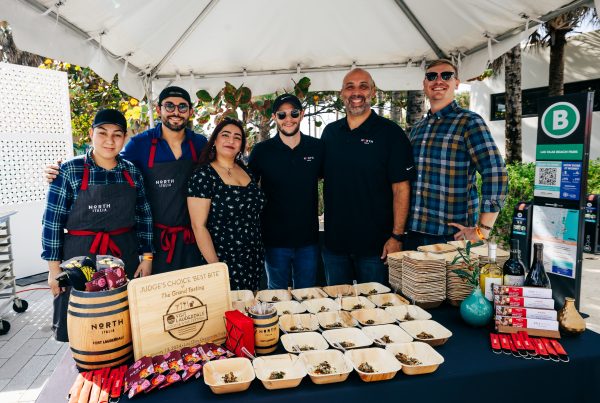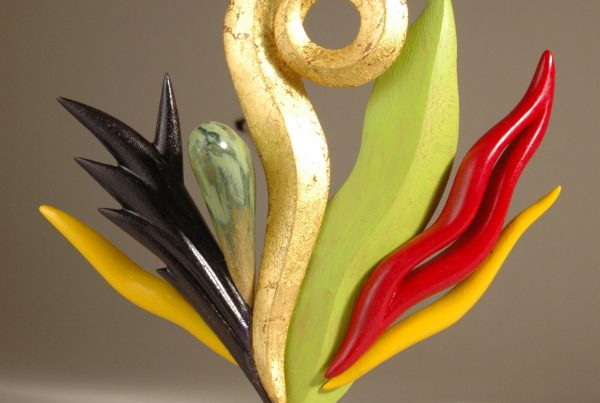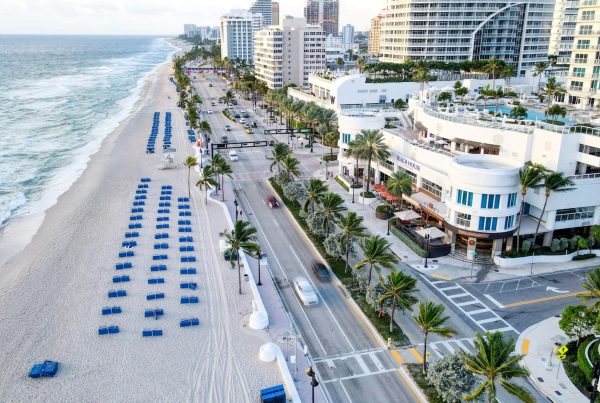A love of nature is in Thomas Reinert’s blood. His father was a fisheries professor at the University of Georgia’s School of Forestry and Natural Resources, and Thomas would often accompany him on fishing trips. While Reinert considered medical school, “I guess I saw a surgery on Lifetime Channel, and thought, I could filet a fish all day long, but I don’t know about cutting up people,” he recalls.
Reinert achieved a master’s degree in Oceanography and Coastal Sciences at Louisiana State, and earned his Ph.D. studying striped bass in the Savannah River. He started at the Florida Fish and Wildlife Conservation Commission (FWC) as a lab manager in Tequesta, and he became regional director for the organization’s south region in 2016, working from its West Palm Beach office. Helping to fulfill FWC’s mission of “managing fish and wildlife resources for their long-term well-being and the benefit of people,” Reinert and his team handle everything from habitat and species conservation to fishing and hunting licenses, scientific research, law enforcement and public inquiries.
“I’m learning every day,” he says. “South Florida is rife for strange and odd things.” We asked him about a few of the issues that wind up on his desk.
THE INVASIVE SPECIES THAT MOST CONCERN HIM:
People immediately gravitate toward pythons or tegus, but the one species we spend the most money on is hydrilla, which is an aquatic plant, particularly in central and north Florida, where we have large infestations of hydrilla, and it gets easily out of control.
Down here, the python really has captured everyone’s attention, including the governor. He’s spoken at our Python Challenge events, and challenged us to have it every year. The Python Challenge is a way to gain exposure for the issue of nonnatives. … It allows average citizens and some of our professional contractors to go out and compete for prizes by rounding up as many pythons as they can. It’s not going to solve the problem, but it’s a great way of getting the word out.
ON THE FWC’S SUPPLEMENTAL MANATEE FEEDING PROGRAM:
We had a manatee mortality event, declared federally by NOAA and the U.S. Fish and Wildlife Service, that was occurring on the east coast of Florida. It started in 2020 and continued the following year. There was a lack of seagrass, a lack of forage, in the winter, particularly in the Indian River Lagoon near Titusville. So we started to see these emaciated manatees and find them dead. And ultimately the cause was starvation, which we didn’t think could happen. It was this culmination of algae blooms and things that reduced their seagrass forage. It was a big problem, and the second winter, when we figured it out, we embarked upon a never-before, unprecedented effort to supplementally feed manatees.
We used Florida-grown produce, Romaine lettuce primarily, which is what we use in rehab. … We fed hundreds of thousands of pounds of lettuce over that first winter, and we doubled that the following winter. Did that have an effect? It’s very hard to say. But this past winter, we had much fewer starvation deaths. I think the feeding program likely helped some at-risk manatees avoid starvation. It didn’t solve the problem, because … the seagrasses are at an all-time low, and we’re doing a lot of habitat efforts, re-planting, pollution control, nutrient control, to try to remove the threat of algae blooms, which shade out seagrasses, and then to encourage seagrass re-growth.
ON THE EFFECTS OF HUMANS ON WILDLIFE:
Habitat loss is probably the greatest loss that animals face, and habitat fragmentation. Wide-ranging animals like the Florida panther and Florida black bear need a lot of space. We’re back to 1,000 people moving to Florida a day, with an improved economy. They’ve got to live somewhere. So things like the Florida Wildlife Corridor Act, which passed a couple of years ago, try to preserve the connectivity between habitats.
A variety of things people can do is secure their trash, and that works for raccoons all the way up to bears and coyotes. Can you put your trash out in the morning rather than the night before? Because if it’s out overnight, it’s easy pickings for some of those animals.
Avoid interacting with wildlife. They’re not your friends. They don’t want to be cuddled or petted, and sometimes people forget that. Just observe wildlife from a distance and appreciate it.
ON THE BEST SPOTS FOR WILDLIFE VIEWING:
We have a vital connection to the natural world, and the Great Florida Birding Trail is a great way to get out there. We have over 6 million acres of land in Florida that are in our wildlife management system. Locally, Arthur R. Marshall Loxahatchee Wildlife Refuge is a great place to visit—for birdwatching, for kayaking, for getting out in nature. Also locally, Green Cay wetlands is a great place, right in the urban environment. More than 250 birds have been recorded there. … It’s a great time to get out there.
For more from Thomas Reinert, check out this exclusive Web Extra.
This article is from the February 2024 issue of Boca magazine. For more like this, click here to subscribe to the magazine.







